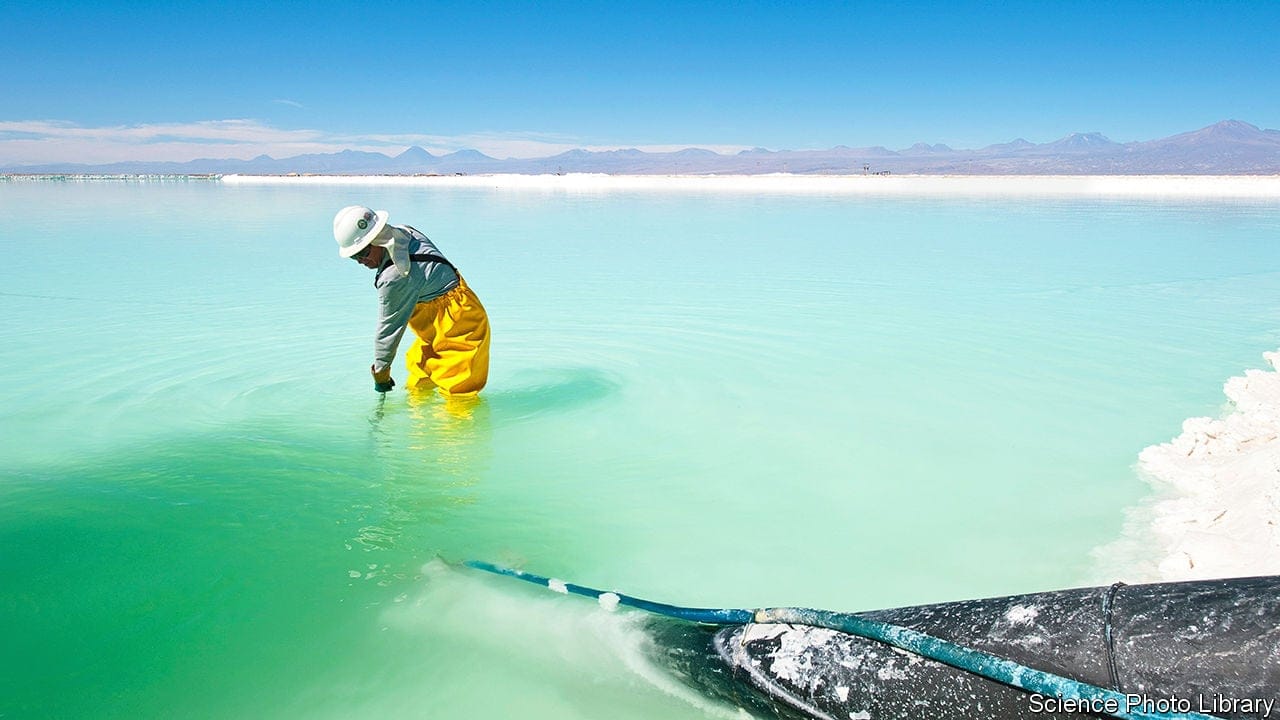- by
- 07 24, 2024
-

-
-
Loading

Loading

AROUND 60% of the world’s lithium, a metal in high demand for making batteries, comes from evaporation ponds, like that pictured overleaf, located in deserts in Argentina, Bolivia and Chile. These ponds, which can have individual areas of 60km or more, are filled with lithium-rich brine pumped from underground. That brine, as the ponds’ name suggests, is then concentrated in them by evaporation, after which it is treated to purge it of other metals, such as sodium and magnesium, and the lithium is precipitated as lithium carbonate.This all takes time—often as much as two years. And the process of purification is complex and inefficient. As a consequence, only about 30% of the lithium in the original brine reaches the marketplace.